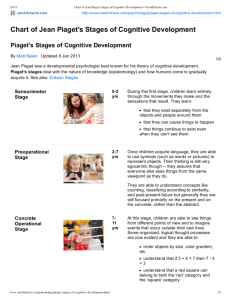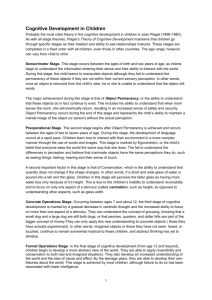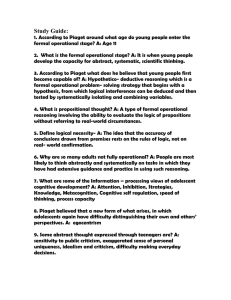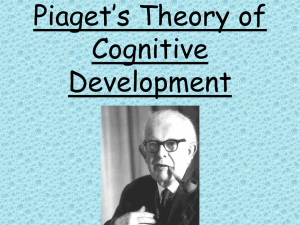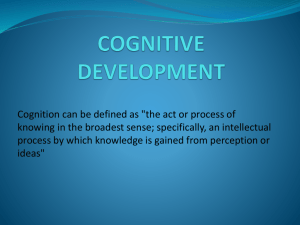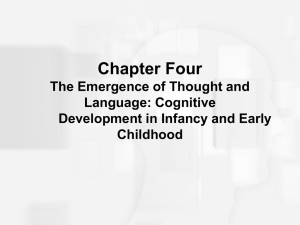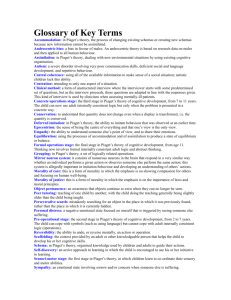Teaching Guide selection 3
advertisement
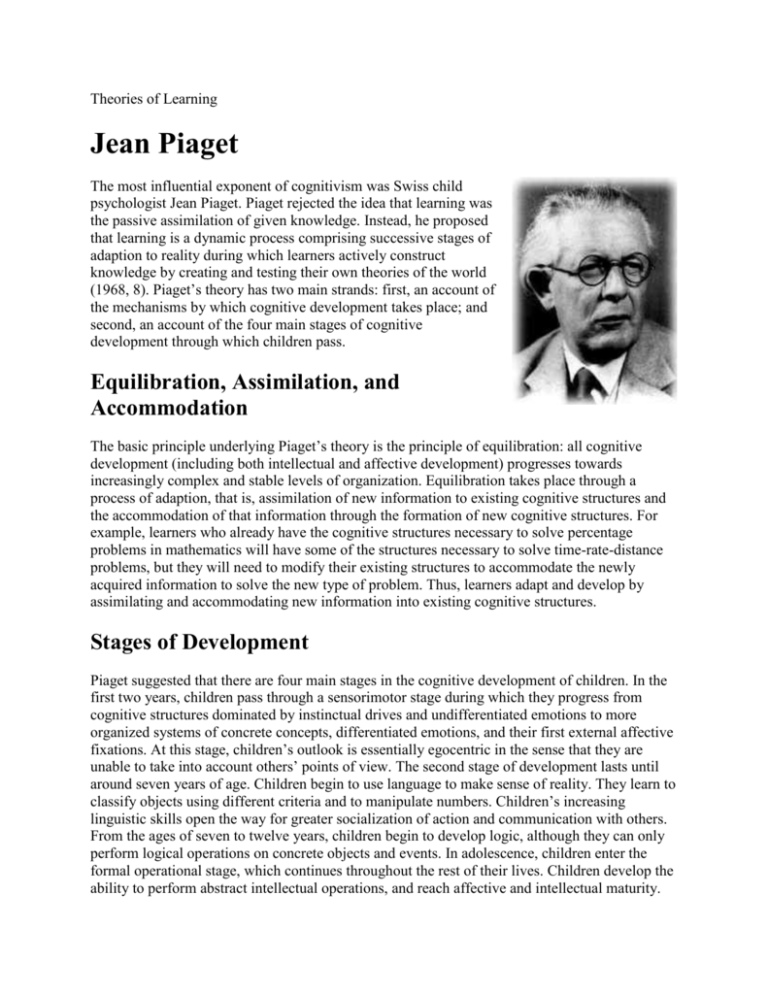
Theories of Learning Jean Piaget The most influential exponent of cognitivism was Swiss child psychologist Jean Piaget. Piaget rejected the idea that learning was the passive assimilation of given knowledge. Instead, he proposed that learning is a dynamic process comprising successive stages of adaption to reality during which learners actively construct knowledge by creating and testing their own theories of the world (1968, 8). Piaget’s theory has two main strands: first, an account of the mechanisms by which cognitive development takes place; and second, an account of the four main stages of cognitive development through which children pass. Equilibration, Assimilation, and Accommodation The basic principle underlying Piaget’s theory is the principle of equilibration: all cognitive development (including both intellectual and affective development) progresses towards increasingly complex and stable levels of organization. Equilibration takes place through a process of adaption, that is, assimilation of new information to existing cognitive structures and the accommodation of that information through the formation of new cognitive structures. For example, learners who already have the cognitive structures necessary to solve percentage problems in mathematics will have some of the structures necessary to solve time-rate-distance problems, but they will need to modify their existing structures to accommodate the newly acquired information to solve the new type of problem. Thus, learners adapt and develop by assimilating and accommodating new information into existing cognitive structures. Stages of Development Piaget suggested that there are four main stages in the cognitive development of children. In the first two years, children pass through a sensorimotor stage during which they progress from cognitive structures dominated by instinctual drives and undifferentiated emotions to more organized systems of concrete concepts, differentiated emotions, and their first external affective fixations. At this stage, children’s outlook is essentially egocentric in the sense that they are unable to take into account others’ points of view. The second stage of development lasts until around seven years of age. Children begin to use language to make sense of reality. They learn to classify objects using different criteria and to manipulate numbers. Children’s increasing linguistic skills open the way for greater socialization of action and communication with others. From the ages of seven to twelve years, children begin to develop logic, although they can only perform logical operations on concrete objects and events. In adolescence, children enter the formal operational stage, which continues throughout the rest of their lives. Children develop the ability to perform abstract intellectual operations, and reach affective and intellectual maturity. They learn how to formulate and test abstract hypotheses without referring to concrete objects. Most importantly, children develop the capacity to appreciate others' points of view as well as their own. Piaget’s theory was widely accepted from the 1950s until the 1970s. Although the theory is not now as widely accepted, it has had a significant influence on later theories of cognitive development. For instance, the idea of adaption through assimilation and accommodation is still widely accepted. Reference Piaget, J. (1968). Six Psychological Studies. Anita Tenzer (Trans.), New York: Vintage Books.



